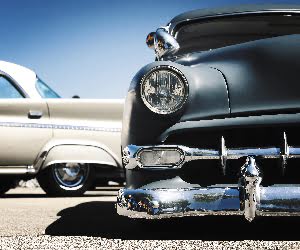
Blast from the Past - Winter 2015
October 2, 2015
4 minute ReadWe occasionally provide excerpts from The Great American Car Wash Story. Former ICA Executive Director Gus Trantham and veteran commercial writer John Beck wrote this book in 1994. It represents the most complete history we have found of the industry in North America. Enjoy.
Chapter 3
HOW TO WASH A CARRIAGE
There have been many tales told about the origin of car washing, some antedating Hollywood, but none can hold a candle to the yarn spun by William McVeigh of Mesa, Arizona. McVeigh used to operate the Capital Auto Wash in Battle Creek, Michigan, and he recently wrote about how — years ago — at one of his Michigan Carwash Association meetings, a Dr. Miller of DuBois Chemical gave his own version of the real beginning of the car wash industry.
According to Dr. Miller: “The guy who started it all was Alexander the Great! He had his soldiers polish their chariots with olive oil and lambs’ wool because this helped to dazzle his enemies into submission much easier.”
Well, now! If that’s true, old Alex would have made a great automobile dealer, wouldn’t he, dazzling prospects into submission? But that oil could have picked up an awful lot of dust! What a tale!
On the other hand, it might not be too far-fetched. Alexander did have some kind of secret for using his comparatively small army to conquer hosts much larger than his own. And he did bequeath us a dazzling reputation for getting things done.
And too, the chariots provided about the only means of wheeled transport right up until and including the Roman empire.
In face, the word “car” comes from the Latin “carrus” for “chariot” or “cart,” and many a present day car owner will refer to his vehicle as “that old chariot.”
In Roman cities, the slots left for the chariot wheels in street crossings had a width of up to 56 inches, and when the British started to develop steam locomotives they adopted this width as the standard gauge for the train wheels, which has continued down to the present day. It also appears that this was adopted as the prevailing gauge for motor cars when they came along to put the human race on wheels.
But to get back to the idea of washing chariots. Before the motor car arrived, there were lots of carriages around that needed attention, especially after navigating many miles of muddy roads.
It was Kenneth Wells of the Boyertown Museum who reminded us of this when he took us on a tour of historic vehicles.
“The proper care of carriages could require considerable work,” he pointed out. “In fact, I can supply you with a copy of an article on this very subject.”
Carriage washing?
You bet!
This article which is worth quoting here in full as a guide to earnest car washers, was in the form of a poster with the following advisory at its head: “Tack this up in your stable.”
(For the uninitiated city dweller, a stable back in those days was a big barn with horse stalls, a hayloft, and plenty of room to park carriages and wagons and hang all kinds of leather harness and horse gear.)
Appropriately, the material used in the poster was copied from the magazine Stable, which was as widely read in those days as a magazine called Car World would be today.
The poster was printed and distributed by the H.H. Babcock Company, a leading carriage builder headquartered in Watertown, New York. This poster could easily be adapted to the use of today’s professional car wash detailers.
Proper CARE of CARRIAGES
Every User of Carriages Should Read This Carefully
Washing a Carriage
The carriage should be washed immediately when it comes in, and on no account should the specks of mud be allowed to dry on, or the varnish will be spotted. This is especially the case with new carriages during the first month. When washing, the carriage should never be placed where the sun will shine on it. Plenty of water should be used; but do take care that it is not driven into the body, inside the seat, or inside of the body in any place whatsoever. We have noticed many times watching a man wash a carriage that he would put the hose right inside full force, and the carriage would get a drenching at one time that it should never have in its life time. Glue, nails and screws will not hold lumber together if once dampness gets into the joints. Specks on the body should be softened by splashing the whole, and then squeezing water out of a large sponge, when the dirt will soften and harmlessly run off. Care should be taken to wipe the surface dry with a clean chamois leather, and to dry the water from each corner and joint. The under carriage and wheels should be washed with sponge in the same way; but never with a spoke brush, unless you want to scratch the varnish off. The same care, however, is necessary in drying off with a chamois leather, as the water, if left on, will stain the varnish.
After washing and putting the carriage away, do not allow the side curtains or storm aprons, if they are soiled or damp, to remain in the vehicle, but unfold them and hang them where they can dry out and then refold and put in their proper place in the carriage. If this is not done, the side curtains can soften and stick together, the enamel peel off and the cloth and leather mold and rot.








